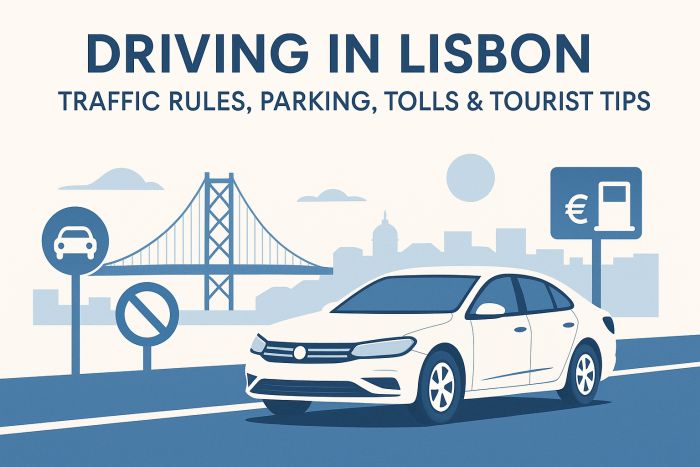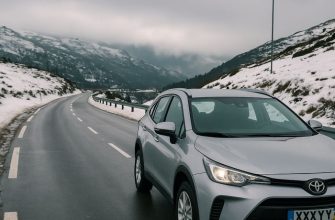- 🚘 Driving in Lisbon: What You Need to Know Before Hitting the Road
- 🛣️ Is Driving in Lisbon Difficult?
- 🚦 Traffic Rules in Lisbon (And Portugal)
- 🅿️ Parking in Lisbon
- 💰 Toll Roads & Via Verde
- 🛑 Common Driving Challenges
- 🧭 Driving Tips for Tourists
- 🚗 Is Driving in Lisbon Worth It?
- ✅ Summary: What to Expect Driving in Lisbon
🚘 Driving in Lisbon: What You Need to Know Before Hitting the Road
Lisbon is a city of hills, narrow streets, roundabouts, and vibrant energy. Whether you’re renting a car for a road trip or planning to drive around the city, knowing how to navigate traffic, parking, and tolls is key to a smooth experience.

🛣️ Is Driving in Lisbon Difficult?
Compared to other major European cities, driving in Lisbon can be challenging but manageable. You’ll encounter steep streets, frequent roundabouts, and sometimes aggressive driving behavior — especially during peak hours. However, with a bit of preparation and a good GPS, you can drive safely and confidently.
🚦 Traffic Rules in Lisbon (And Portugal)
- Drive on the right-hand side of the road
- Seat belts are mandatory for all passengers
- Use of mobile phones while driving is prohibited (hands-free only)
- Headlights must be on in tunnels and during poor visibility
- Children under 12 must sit in the back seat and use appropriate child seats
Speed limits:
- Urban areas: 50 km/h
- Non-urban roads: 90 km/h
- Highways: 120 km/h
🅿️ Parking in Lisbon
Parking in Lisbon varies greatly by district. The city is divided into colored zones managed by EMEL:
💸 Don’t Overpay at the Airport
Compare real-time rental deals with no hidden fees or credit card needed.
- Blue Zone (Zona Azul): Paid parking, max duration 2–4 hours
- Green/Yellow Zones: Cheaper but often harder to find
- Underground garages: Safer but more expensive (e.g., Praça do Comércio, Rossio)
You can pay via machines or the EMEL ePark app. Always check signs to avoid fines or towing.
💰 Toll Roads & Via Verde
Many highways around Lisbon, especially routes to Cascais, Sintra, or the Algarve, are toll roads. Portugal uses electronic toll systems, so:
- Ask your rental company if the vehicle is equipped with Via Verde (electronic transponder)
- If not, you’ll need to pay online or at post offices using the license plate number
Electronic tolls are clearly marked, and fees are automatically charged if you use Via Verde lanes.
🛑 Common Driving Challenges
- Hilly terrain, especially in neighborhoods like Alfama or Bairro Alto — manual cars may be tricky
- Trams and narrow lanes in older districts
- Roundabouts — give way to cars already inside unless marked otherwise
- Aggressive local drivers — stay calm and predictable, especially during rush hours
🧭 Driving Tips for Tourists
If you’re not used to European cities, here are some Lisbon-specific tips:
- Use Google Maps or Waze for real-time traffic updates
- Plan routes in advance to avoid steep, narrow alleys
- Avoid driving during peak times (8:00–10:00 & 17:00–19:00)
- Don’t rely on street parking in the city center — consider park-and-ride lots
🚗 Is Driving in Lisbon Worth It?
It depends on your itinerary. If you’re staying mostly in Lisbon city center, public transport or walking is easier. But if you’re heading to Sintra, Cascais, Setúbal, or other scenic spots, a car offers unmatched freedom and convenience.
✅ Summary: What to Expect Driving in Lisbon
- Urban traffic can be dense and fast-paced
- Parking is limited — use paid garages where possible
- Tolls are electronic — ask about Via Verde
- Hills and trams require extra caution
With smart planning, driving in Lisbon can be a rewarding experience — especially if your goal is to explore the best of central Portugal by car.




